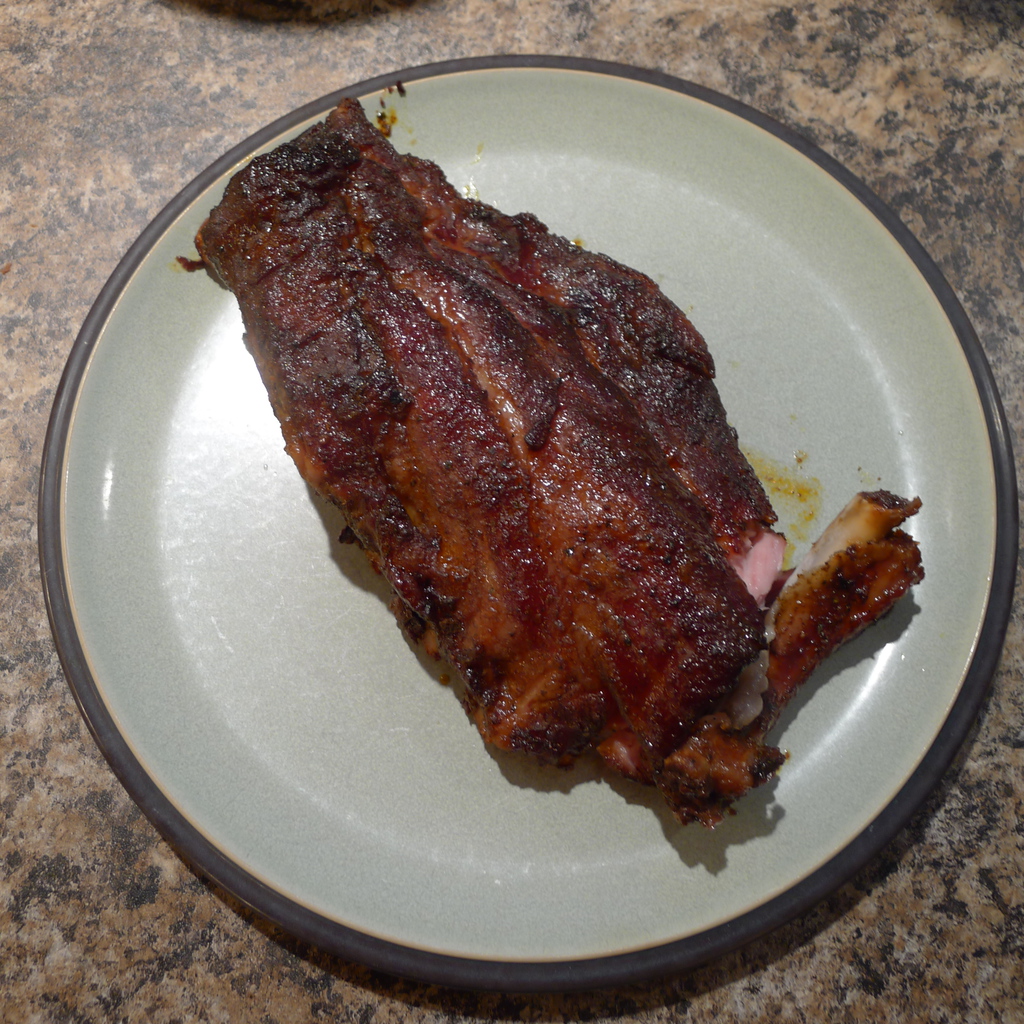So, I received a Christmas gift a bit early this year. My parents got us a Weber Smokey Mountain Cooker. We received it on Thursday and I set it up Friday. Unlike some comments I’d read, I had no issues with assembly due to incorrect parts or missing parts. My only regret is that I didn’t wait for the boy to help me assemble it.
I was advised to cure the smoker prior to using it, so yesterday I purchased some Kingsford charcoal and let it rip. Basically, I filled the bottom with a half-bag and planned on letting it burn out and leave it at that. I didn’t bother putting any water in the bowl.
The Wife had pulled out some chicken thighs for dinner and as the afternoon wore on and the grill cooked, I started thinking it would be a waste of all that heat if I didn’t cook something with it. The curing advise I’d read and heard involved cooking some fatty meats to get the inside of the smoker good and greased up. Chicken thighs are pretty fatty, so I figured what the heck.
I let the WSM run wide open, so the temp on the dome thermometer read around 300F. I suspect the temp at the grill level was something hotter than that, but in a sense it’s irrelevant. The main thing is I ran it wide open and as hot as I could get it. The chicken took about 50 minutes to cook. When we served it, both kids had second helpings of the thighs, and everyone commented it was the best they’d had. The Wife, particularly, was impressed because I typically kill them on the gas grill, but here they were very tender and tasty.
So score that one a victory.
Cooking attempt 2 took place tonight or, more correctly, this afternoon. The Wife had prepared leg of lamb and she’d intended for me to grill it. Emboldened by yesterday’s success, I opted to use the WSM to cook it. Rather than running it hot, I opted to run it at about 250F as read on the dome thermometer. I put the lamb on the top grill and fiddled with the lower vents to get a consistent temperature. Once there, I put three chunks of maple wood on the coals. As with the chicken, I didn’t fill the bowl with water.
I also made sure to stick a probe in the lamb so I could monitor the internal temp. One thing I learned from the chicken is that when cooking, don’t remove the cover. Especially when using the upper most grill. All the heat disappears and it takes time to get things back up to temp. I didn’t want to have any problems wit the lamb, thus the temperature probe.
It took about two-and-a-half-hours before the probe read 155F. I pulled the lamb off and let it rest for about 10 minutes prior to serving. It was tender and cooked to about medium, with quite a bit of red meat. Tonight, the reviews were more mixed. The Wife didn’t like the smokey flavor and neither did the lass. The boy had a couple of helpings, as did I. Actually, for that matter, so did the Wife. For my part, I didn’t think the smoke flavor was that powerful, but I’m probably not the best judge.
So I think we’ll have to score that one a draw.
But even with only two uses under my belt, I’m excited about the possibilities. Prior to this, I’d used our Weber Kettle grill for this type of cooking and, frankly, did so rarely because it’s pretty time intensive. I’d constantly be monitoring the temperature and fiddling, plus I was constantly removing the lid to add charcoal to keep things going for longer cooks.
With the WSM, the entire operation is much easier. The side door will make it straight forward to add fuel for longer cooks, and not having to remove the lid will maintain the temperature while doing so. The grates on the bottom and the dome combine to make getting a consistent temperature much easier. Temperature monitoring is easy with the dome thermometer as accuracy isn’t as important as knowing that it’s consistent. For more sensitive cooks, like the today with the lamb, I can just use a probe.
So, I expect I’ll be doing much more experimenting with BBQ this year. In fact, I’ve created a new category here on the blog to help me keep track of my experiments. Right now, there’s a bunch of baby backs sitting in the freezer, waiting…
